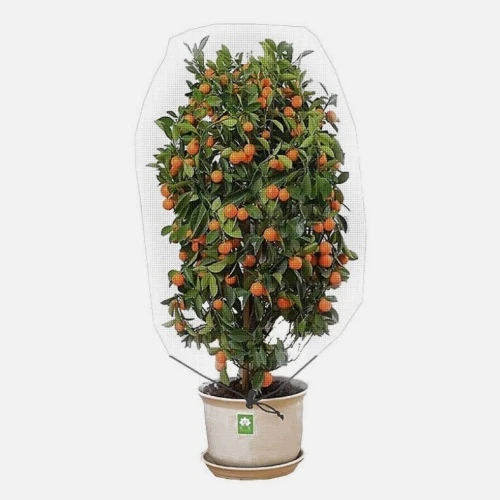-
 Afrikaans
Afrikaans -
 Albanian
Albanian -
 Amharic
Amharic -
 Arabic
Arabic -
 Armenian
Armenian -
 Azerbaijani
Azerbaijani -
 Basque
Basque -
 Belarusian
Belarusian -
 Bengali
Bengali -
 Bosnian
Bosnian -
 Bulgarian
Bulgarian -
 Catalan
Catalan -
 Cebuano
Cebuano -
 China
China -
 Corsican
Corsican -
 Croatian
Croatian -
 Czech
Czech -
 Danish
Danish -
 Dutch
Dutch -
 English
English -
 Esperanto
Esperanto -
 Estonian
Estonian -
 Finnish
Finnish -
 French
French -
 Frisian
Frisian -
 Galician
Galician -
 Georgian
Georgian -
 German
German -
 Greek
Greek -
 Gujarati
Gujarati -
 Haitian Creole
Haitian Creole -
 hausa
hausa -
 hawaiian
hawaiian -
 Hebrew
Hebrew -
 Hindi
Hindi -
 Miao
Miao -
 Hungarian
Hungarian -
 Icelandic
Icelandic -
 igbo
igbo -
 Indonesian
Indonesian -
 irish
irish -
 Italian
Italian -
 Japanese
Japanese -
 Javanese
Javanese -
 Kannada
Kannada -
 kazakh
kazakh -
 Khmer
Khmer -
 Rwandese
Rwandese -
 Korean
Korean -
 Kurdish
Kurdish -
 Kyrgyz
Kyrgyz -
 Lao
Lao -
 Latin
Latin -
 Latvian
Latvian -
 Lithuanian
Lithuanian -
 Luxembourgish
Luxembourgish -
 Macedonian
Macedonian -
 Malgashi
Malgashi -
 Malay
Malay -
 Malayalam
Malayalam -
 Maltese
Maltese -
 Maori
Maori -
 Marathi
Marathi -
 Mongolian
Mongolian -
 Myanmar
Myanmar -
 Nepali
Nepali -
 Norwegian
Norwegian -
 Norwegian
Norwegian -
 Occitan
Occitan -
 Pashto
Pashto -
 Persian
Persian -
 Polish
Polish -
 Portuguese
Portuguese -
 Punjabi
Punjabi -
 Romanian
Romanian -
 Russian
Russian -
 Samoan
Samoan -
 Scottish Gaelic
Scottish Gaelic -
 Serbian
Serbian -
 Sesotho
Sesotho -
 Shona
Shona -
 Sindhi
Sindhi -
 Sinhala
Sinhala -
 Slovak
Slovak -
 Slovenian
Slovenian -
 Somali
Somali -
 Spanish
Spanish -
 Sundanese
Sundanese -
 Swahili
Swahili -
 Swedish
Swedish -
 Tagalog
Tagalog -
 Tajik
Tajik -
 Tamil
Tamil -
 Tatar
Tatar -
 Telugu
Telugu -
 Thai
Thai -
 Turkish
Turkish -
 Turkmen
Turkmen -
 Ukrainian
Ukrainian -
 Urdu
Urdu -
 Uighur
Uighur -
 Uzbek
Uzbek -
 Vietnamese
Vietnamese -
 Welsh
Welsh -
 Bantu
Bantu -
 Yiddish
Yiddish -
 Yoruba
Yoruba -
 Zulu
Zulu
installing bird netting
Installing Bird Netting A Comprehensive Guide
Birds can be both a beautiful addition to our environment and a pesky nuisance, particularly when they invade gardens, balconies, or commercial properties. For those seeking to protect their plants, crops, and structures, installing bird netting could be an effective and humane solution. This article provides a step-by-step guide on how to properly install bird netting to keep unwanted feathered visitors at bay.
Understanding Bird Netting
Bird netting is made of durable materials, such as nylon or polyethylene, designed to create a barrier that prevents birds from entering specific areas. Available in various mesh sizes, it is crucial to choose the right type for your needs. Smaller mesh sizes are ideal for keeping out small birds like sparrows, while larger sizes may be appropriate for bigger species.
Gathering Your Materials
Before you start the installation, it's essential to gather all necessary materials
. You will need- Bird netting (ensure you have enough to cover the targeted area) - Support frames or poles (if needed) - Zip ties, clips, or hooks for securing the netting - A pair of scissors or utility knife - A measuring tape - Ladder (for elevated installations)
Step-by-Step Installation
installing bird netting

1. Measure the Area Using a measuring tape, determine the dimensions of the space you wish to protect. This could be a garden bed, a balcony, or even a larger area like an orchard.
2. Cut the Netting With your measurements noted, cut the bird netting to size, ensuring that you leave extra material on all sides for securing the netting properly.
3. Set Up Support Frames (if necessary) Depending on the area, you may need to install support frames to hold up the netting. Use poles or stakes to create a structure that keeps the netting elevated and away from plants.
4. Secure the Netting Start from one corner to avoid tangling. Drape the bird netting over the frame or area, making sure it covers the entire space. Use zip ties, clips, or hooks to fasten the edges securely to the support frame or nearby structures. Be mindful of any gaps that birds could exploit.
5. Inspect for Gaps After installation, walk around the perimeter to check for any openings. Birds can squeeze through surprisingly small spaces, so it’s vital to ensure the netting is taut and fully covers the intended area.
6. Regular Maintenance To keep the netting effective, inspect it periodically for wear and tear, especially after severe weather. Replace or repair any damaged sections promptly.
Conclusion
Installing bird netting is a proactive measure that can protect your garden, crops, or property from unwanted avian visitors without causing them harm. By following these straightforward steps and using the right materials, you can create an effective barrier that helps maintain the balance between enjoying the beauty of birds and safeguarding your outdoor spaces. With a little time and effort, bird netting can be a valuable investment for anyone looking to deter these furry friends while encouraging a harmonious coexistence.
-
Shipping Plastic Bags for Every NeedNewsJul.24,2025
-
Safety Netting: Your Shield in ConstructionNewsJul.24,2025
-
Plastic Mesh Netting for Everyday UseNewsJul.24,2025
-
Nylon Netting for Every UseNewsJul.24,2025
-
Mesh Breeder Box for Fish TanksNewsJul.24,2025
-
Expanded Steel Mesh Offers Durable VersatilityNewsJul.24,2025











